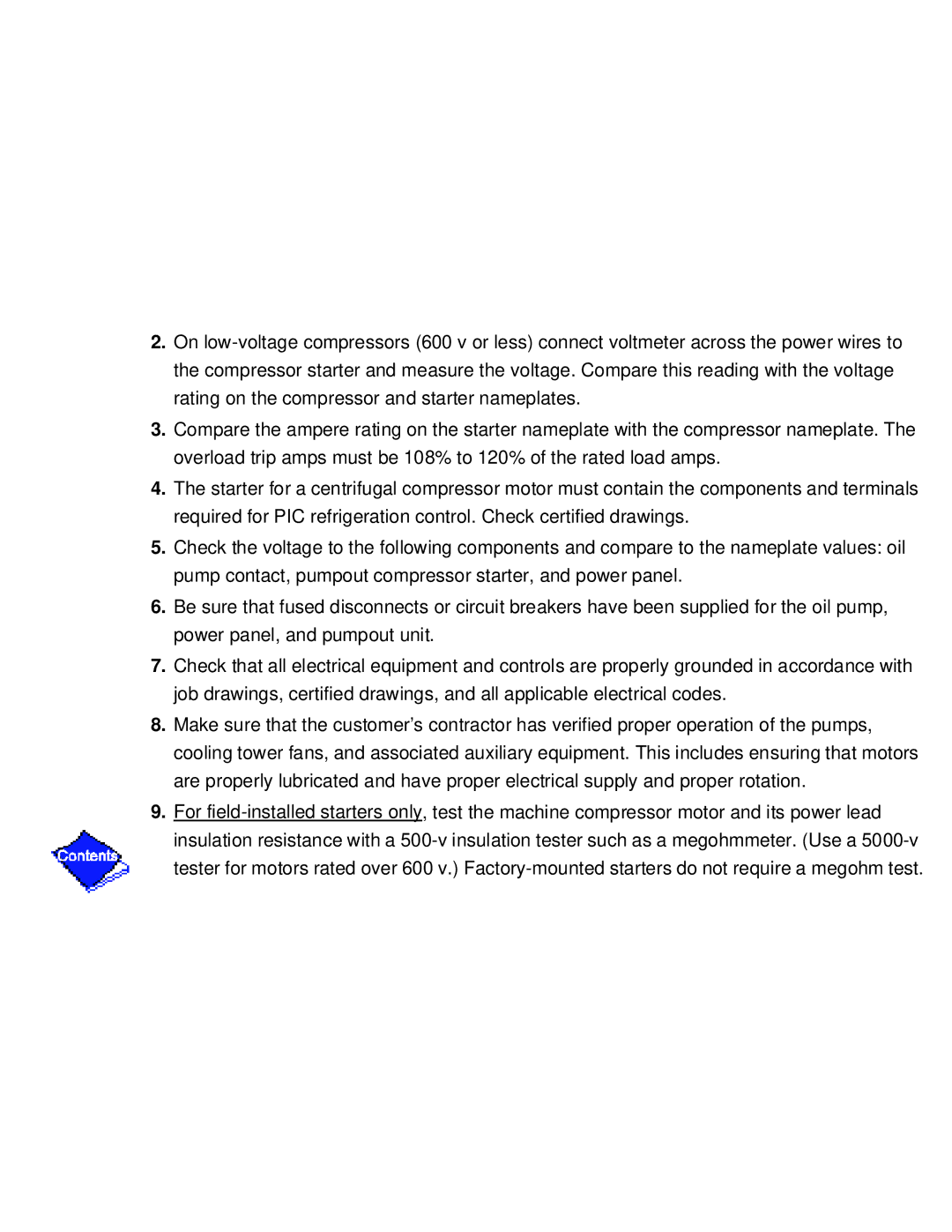
2.On
3.Compare the ampere rating on the starter nameplate with the compressor nameplate. The overload trip amps must be 108% to 120% of the rated load amps.
4.The starter for a centrifugal compressor motor must contain the components and terminals required for PIC refrigeration control. Check certified drawings.
5.Check the voltage to the following components and compare to the nameplate values: oil pump contact, pumpout compressor starter, and power panel.
6.Be sure that fused disconnects or circuit breakers have been supplied for the oil pump, power panel, and pumpout unit.
7.Check that all electrical equipment and controls are properly grounded in accordance with job drawings, certified drawings, and all applicable electrical codes.
8.Make sure that the customer’s contractor has verified proper operation of the pumps, cooling tower fans, and associated auxiliary equipment. This includes ensuring that motors are properly lubricated and have proper electrical supply and proper rotation.
9.For
